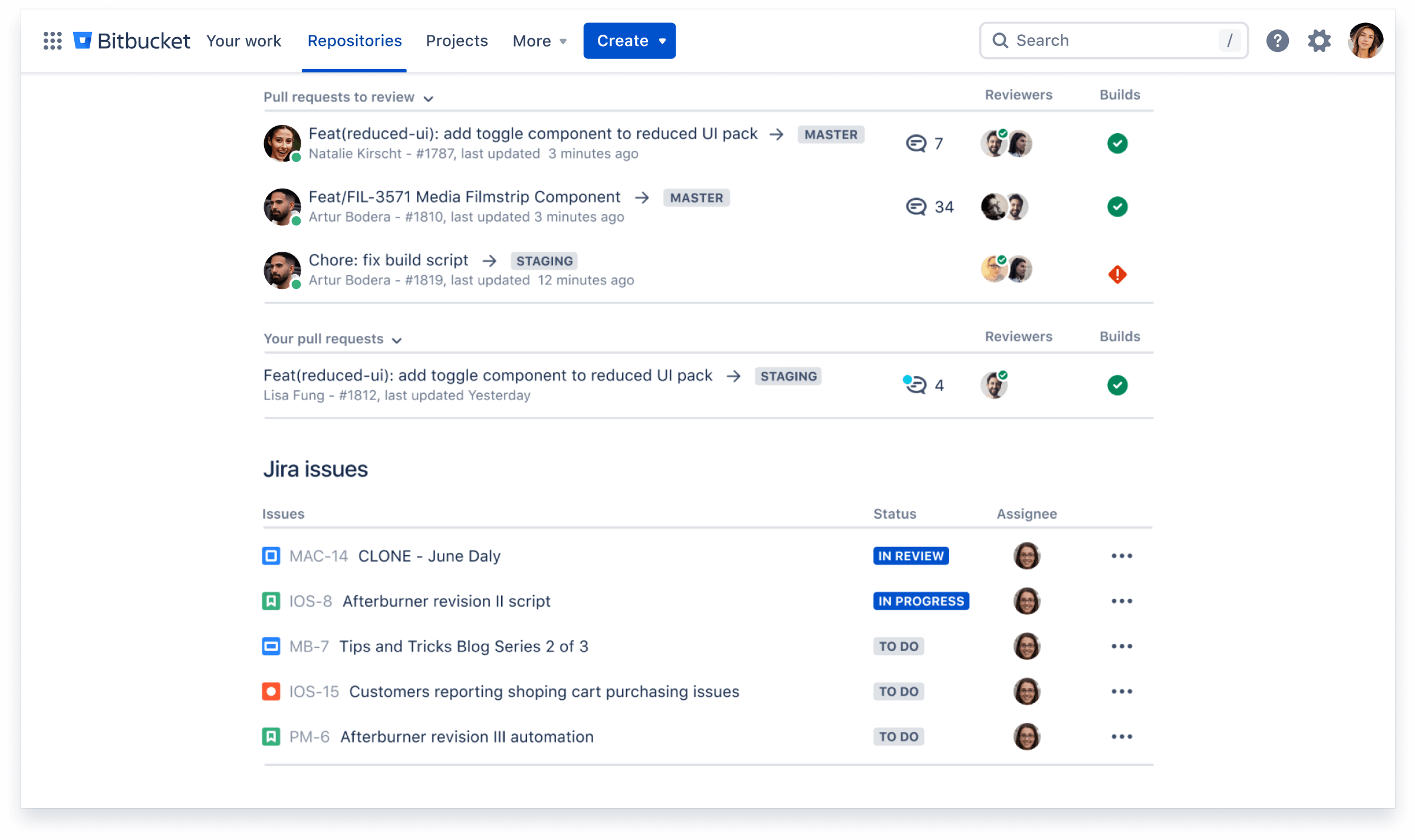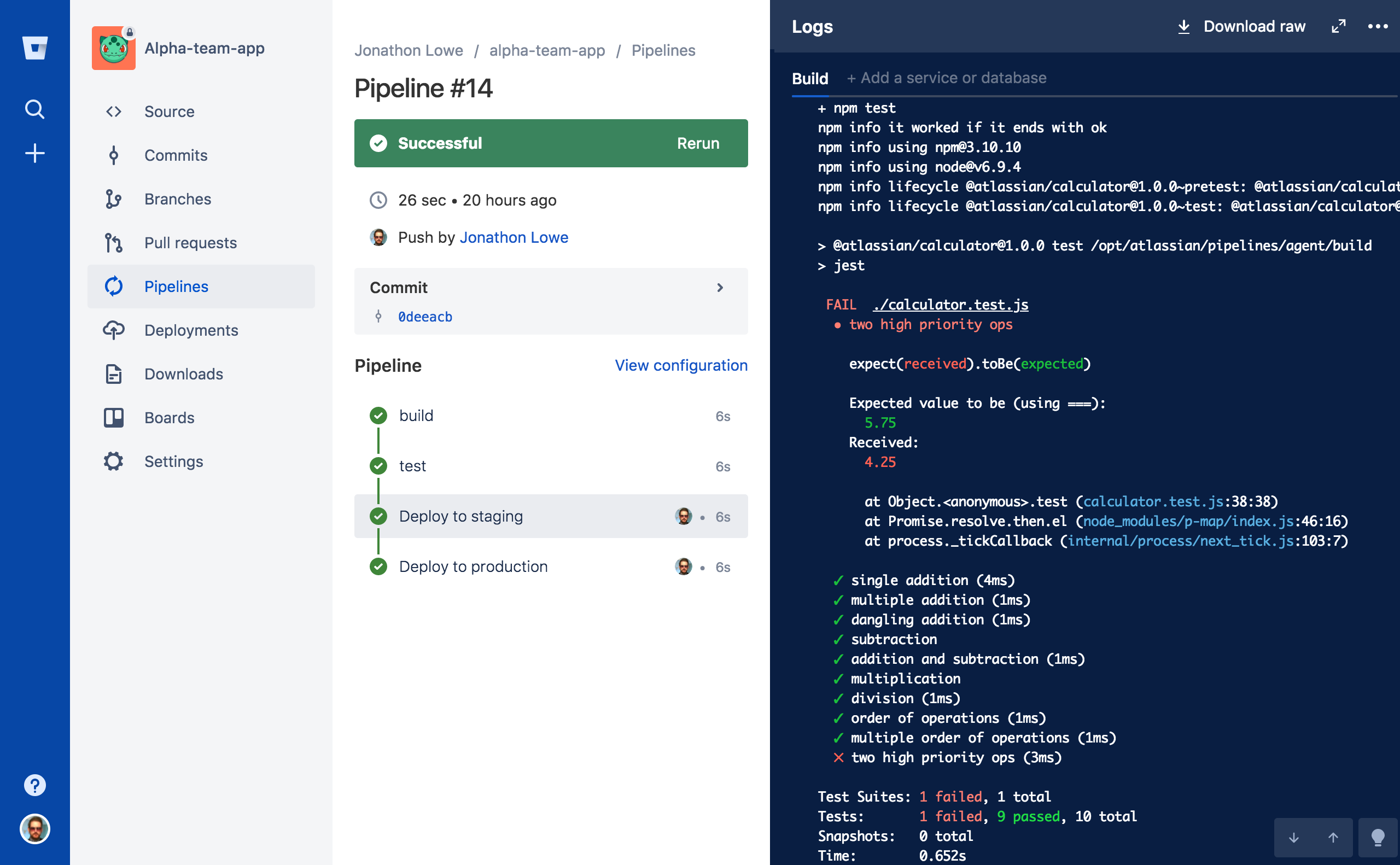适合 DevOps 团队的 9 款最佳配置管理工具
本指南将评述最佳软件配置管理工具的优势,以及它们如何帮助 DevOps 团队简化工作流程和保持版本控制,同时协助进行协作和问题管理。
免费试用 Compass
改善您的开发人员体验、为所有服务编制目录,并改善软件运行状况。
什么是配置管理工具?
相关资料
防止软件杂乱无章
查看解决方案
使用 Compass 改善您的开发人员体验
配置管理工具的优势
要想顺利地启动 DevOps,您需要合适的 DevOps 工具。配置管理工具使团队能够在整个软件开发和部署生命周期中管理配置,以实现一致性、可靠性和稳定性。
这些工具可提供强大的版本控制、促进协作并简化工作流程。
这些功能可使启动 DevOps 的团队受益,因为它们具有以下用途:
- 确保对环境变更进行清晰的审计跟踪,并在问题出现时通过版本控制实现迅速回滚。
- 改善团队成员之间的沟通,推动建设性协作,以实现高效的开发周期。
- 通过简化的工作流程,加快软件交付。
9 款最佳配置管理工具:
要发现您公司的最佳配置管理工具,需要评估您的需求、基础架构、团队综合技能、可扩展性需求和环境的复杂性。考虑每款工具的功能、易用性、可扩展性、社区支持以及与现有基础架构的兼容性。
了解 9 款受到最广泛认可和欢迎的配置管理工具及其最适合的用途。
最适合 CI/CD:Bitbucket

使用 Git 的分布式版本控制功能,Bitbucket 通过拉取请求为协作开发提供无缝环境。团队可以审查代码变更,提出修改建议,并为将更新集成到主代码库的结构化流程提供支持。
Bitbucket 与持续集成和持续部署 (CI/CD) 管道相集成,可简化软件交付流程。团队可以自动构建、测试和部署应用,以确保在整个开发生命周期中提供始终如一的质量和可靠性。
最佳版本控制系统:Git
学习 Git 的团队可以将配置管理数据与代码结合起来,放入存储库中,以全面了解整个项目的演变。
团队会收到统一的变更历史记录,这有助于简化配置管理以及代码更新。这种方法不仅可以简化协作,增强回滚功能,还可以确保环境之间的一致性。
使用 Bitbucket Cloud 学习 Git。
要学习 Git,请使用 Bitbucket Cloud。您将利用创建存储库、分支、合并和拉取请求等关键功能,同时还有机会了解版本控制策略以及如何在协作环境中使用管道进行持续集成和部署实践。
最适合应用部署:Ansible
Ansible 因其多功能性和简单性而在各种应用部署和配置管理场景中表现出色。Ansible 可以帮助您:
- 通过在不同环境中自动设置和配置应用,简化部署流程。它还可以高效地管理 Web 服务器、数据库和中间件的部署。
- 通过在一组服务器或基础架构组件之间保持一致的配置,简化配置管理。Ansible 可确保完成软件安装配置更新等任务,并在多台计算机上统一执行安全策略。
最适合基础架构自动化:Chef
Chef 利用 IaC,通过易于阅读和管理的代码来创建、调配和维护基础架构组件。Chef 具有以下用途:
- 优化基础架构管理自动化。它提供了一种整体方法,使用户能够高效地自动执行调配、配置和管理任务。
- 确保基础架构的一致性。Chef 使团队能够在不同环境中一致地实施变更、执行策略和管理配置,从而减少手动工作。
- 与 Atlassian 集成。在管理复杂基础架构、增强敏捷性和实现高效团队协作方面,Chef 证明了其有效性。
最适合大型配置:Puppet
Puppet 是一款强大的配置管理工具,以其在管理和维护复杂基础架构方面的强大功能而闻名。Puppet 可以帮助团队:
- 使用 master-agent 体系结构提供可扩展性和集中控制。这使管理员能够从中央 Puppet 服务器高效地管理数千个节点。
- 处理多个节点,同时在广泛的 IT 环境中保持一致性和效率。
最适合实现工作流程自动化:Bitbucket Pipelines

Bitbucket Pipelines 是一款集成式 CI/CD 解决方案,可直接在 Bitbucket 存储库环境中实现工作流程自动化并加快软件交付。Bitbucket Pipelines 具有以下用途:
- 通过允许开发人员定义由代码变更触发的自动化流程,帮助在开发周期的早期发现问题。这包括运行测试、编译代码或执行静态代码分析。
- 支持将应用自动部署到各种环境。测试通过后,通过可自定义的部署,团队可以将变更无缝推送到预生产或生产环境。这可确保更快、更可靠的交付。
最适合卓越的速度和可扩展性:SaltStack
SaltStack 是一款强大的配置管理和自动化工具,以其卓越的速度、可扩展性和多功能性而被认可。该速度优势使得 SaltStack 在管理大规模基础架构方面异常高效。SaltStack 可以帮助团队:
- 使用 YAML 或 Jinja 创建称为状态的自定义配置。它们定义了所需的系统状态,便于跨各种平台进行配置管理、软件安装和系统更新。
- 使用 SaltStack 的事件驱动型体系结构快速应对变更或事务。这样可以对整个基础架构内触发的事件做出实时反应。
- 编排复杂的工作流程并在分布式系统中高速执行命令—非常适合管理大型集群或云环境。
最适合问题管理:Jira Service Management
Jira Service Management 可加快开发、IT 和业务团队之间的工作流程。基于 Jira,团队可以通过 Jira Service Management 流程简化事件和问题管理,包括:
- 使用可自定义的工作流程快速记录、跟踪和解决事件。用户可以创建事件并确定事件的优先级,协作制定解决方案并传达最新信息。Jira Service Management 简化了事件解决流程,确保了更快的响应速度,并最大限度地减少了停机时间。
- 通过问题管理功能确定事件反复出现的根本原因。团队可以关联相关事件,分析根本原因并实施长期解决方案。
- 通过实时更新、状态跟踪和集中式沟通通道促进团队协作。这可确保每个人都了解情况并保持一致,从而提高团队合作和效率。
- 通过将 Jira Service Management 与 Jira Software 和 Confluence 等 Atlassian 工具相集成,获得统一的工作跟踪、协作和知识共享平台。其可定制的工作流和自动化规则可适应特定的公司需求。
最适合容器编排:Kubernetes
Kubernetes 是一个开源容器编排平台,它彻底改变了应用的部署、扩展和管理。Kubernetes 可以高效地在计算机集群中调度和部署容器。这通过管理工作负载放置来优化资源利用率并确保高可用性。Kubernetes 具有以下用途:
- 根据需求或定义的指标自动扩展容器数量。Kubernetes 可确保应用处理不同的工作负载,而无需手动干预。
- 通过向容器高效分配网络流量,提供内置的服务发现和负载平衡机制。这可确保一致的应用可用性和可靠性。
- 监控容器的运行状况并自动重启或替换失败的实例。这种自我修复功能可保持应用的正常运行时间,从而提高可靠性。
详细了解 Kubernetes 以及它如何支持大量容器运行时。
如何将 Bitbucket 与其他软件开发工具相集成
Bitbucket 与 Jira(例如 Jira Software 和 Jira Service Management)无缝集成,可简化事务跟踪和开发协作。开发人员可以直接在 Jira 中引用和链接 Bitbucket 分支、提交和拉取请求,以提高代码变更和任务之间的可追溯性。
Bitbucket 还与 Confluence相集成。这使团队能够将 Bitbucket 存储库、拉取请求和代码段直接嵌入 Confluence 页面。这种集成促进了知识共享,增强了协作,并确保项目文档保持最新。
Bitbucket 还与其内置的 CI/CD 工具 Bitbucket Pipelines 相合并。这种集成可以直接从 Bitbucket 存储库自动执行构建、测试和部署流程。开发人员可以在 Bitbucket 中定义和执行管道,从而促进从代码变更到部署的更顺畅过渡,同时在同一平台内维护配置。
Atlassian 生态系统中的这些集成使团队能够更紧密地工作,从而确保项目管理、文档、代码开发和部署流程之间的无缝流动。它们简化了工作流程,提高了透明度,并增强了整个软件开发生命周期中的协作。
使用 Bitbucket 实现有效的配置管理
Bitbucket 为配置管理提供了一个全面的平台。它允许团队在存储库中维护、跟踪和控制配置以及代码。Bitbucket 可以帮助团队:
- 促进协作工作流程:团队可以创建分支、执行变更以及提交特定于配置的拉取请求。
- 在不同环境中保持一致的配置:通过版本控制,团队可以轻松地在开发、测试、预生产和生产环境中复制配置,以减少差异并确保统一性。
- 实现更好的可重现性、更简单的故障排除和增强的软件稳定性:这可提高软件系统的可靠性和可维护性。
诸如 Bitbucket 之类的配置管理工具可让您获得 DevOps 在稳定性、自动化、可扩展性、可追溯性和协作方面的优势。
通过配置管理,您可以促进更快、更可靠的部署,同时在整个软件开发生命周期中维护一致且受控的环境。
配置管理工具:常见问题
配置管理工具如何增强软件团队的协作?
DevOps 中的配置管理工具通过为版本控制、高效的代码审查和协作工作流程提供结构化框架,增强软件团队内部的协作。
- 版本控制:Git 等工具提供了代码和配置的版本控制功能。它们可维护变更历史记录,允许团队成员跟踪修改,在必要时恢复到以前的版本,并了解配置随时间推移而发生的变化。
- 代码审查:团队成员可以检查配置和代码变更并提供相关反馈。代码审查功能支持讨论、识别潜在问题、提出改进建议,并确保配置符合最佳实践和既定标准。
- 协作工作流程:配置管理工具使团队能够系统地创建分支、管理变更以及合并更新。它们使开发人员能够在其分支内独立处理配置并将其无缝合并,从而最大限度地减少冲突。这些工具还与 CI/CD 管道相集成,以自动执行测试和部署。
如何开始使用 Bitbucket 进行配置管理?
Bitbucket 提供全面的指南、教程和文档,而且您可以参考在线教程、视频和社区论坛,以获得更多洞察信息并借鉴其他用户的经验心得。以下是使用 BitBucket 进行配置管理的方法:
第 1 步:在 Bitbucket 中创建新的存储库,以存储您的配置文件。
第 2 步:将配置文件上传或推送到存储库。确保使用适当的组织和命名惯例,以方便访问和管理。
第 3 步:利用分支管理不同的版本或环境。为特定更改或更新创建分支,以分隔工作并防止冲突。
第 4 步:在 Bitbucket 中授予相应的访问权限和权限。使用拉取请求来审查和合并配置更改,从而打造可控的工作流。
第 5 步:维护清晰的文档,并在代码或配置文件中添加备注。这种做法将确保准确理解和可追溯性。
第 6 步:根据触发条件(例如提交或合并)在不同的环境中自动执行部署流程、运行测试和应用配置。
第 7 步:监控变更,跟踪历史记录,并定期审查。使用差异比对等功能来比较版本并识别修改。
第 8 步:利用 Bitbucket 的安全功能。应用访问控制,启用双重身份验证,并定期审核权限。
分享此文章
下一主题
推荐阅读
将这些资源加入书签,以了解 DevOps 团队的类型,或获取 Atlassian 关于 DevOps 的持续更新。

Compass 社区

教程:创建组件
